How much weight do you military press? What about dumbbell side lateral raises? Let’s not forget barbell shrugs loaded with close to a quarter ton. Now, how do your shoulders (deltoids) look? Are they the size of softballs with your traps reaching toward your ears or are they rather nonexistent and mostly flat? Do they get lost in a t-shirt?
The above scenario is all too common. Guys lift tons of weight, smashing their shoulders into oblivion with set after set of presses, lateral raises, and other movements with little to show for it. The only thing they’re left with is chronically sore and tender joints that will one day require a visit to the guy in the white coat. I’m willing to guarantee it won’t be good news.
What is going on? You’re told to lift heavy, to muscular failure, and to keep piling on the weight to achieve overload with very little if any results. You see plenty of professional bodybuilders do the same but the result is completely different.
Let’s dissect this a little, get to the bottom of why your shoulders aren’t growing, and then look at a plan to finally get you on the right track to packing on more mass to your deltoids and traps. It’ll take some ego-busting, but the outcome will be well worth it.
Why your shoulders won’t grow
It’s painfully obvious (pun intended) why your shoulders aren’t expanding like other areas. Lack of strict form, too much heavy weight, too low of a rep range, too long of a rest between sets, and poor shoulder health habits can be just a few factors causing this shortage of muscle growth.
A quick glance and you’ll quickly come to a conclusion that it’s a haphazard way of approaching such a complex and sometimes delicate area. It’s as though the standard routine of presses, lateral raises, and shrugs are copied and pasted from one program to the other without much thought or attention to detail.
Level Up Your Fitness: Join our 💪 strong community in Fitness Volt Newsletter. Get daily inspiration, expert-backed workouts, nutrition tips, the latest in strength sports, and the support you need to reach your goals. Subscribe for free!
Over time, joints break down affecting other movements that rely on the shoulders for proper function. Pain and possible injury are the results.
Why your shoulders hurt
After weeks, months, and years of overuse and abuse, your joints will eventually incur injury of a certain degree. Whether that will be small tears, scar tissue build-up, or something more major requiring surgery the fact remains that training habits are most-likely the main culprit of your predicament.
This, of course, can be avoided for the most part. Changing your training to address both the health of your joints and a more effective methodology is in order. It will, however, require a hit to the ego. Let’s look at how you can shift gears for the better.
Related: 13 Ways to Avoid Shoulder Pain in The Gym
A new perspective on shoulder training
Heavy work on your chest, back and legs can be an effective way to train for increases in muscle mass and strength. They normally require multi joint movements able to hoist heavy weight for low to moderate reps. These areas are also built for such work. They are made of many large muscles that assist each other.
Almost all upper body work consists of some assistance from the shoulders. They take a pretty decent beating from heavy presses, rows, and pull-downs/pull ups. When your shoulder training day rolls around why would you subject this tender area to more heavy work? It’s the proverbial weak link in the chain and you’re about to put a hammer to it.
The three heads of the deltoid complex as well as the traps don’t require such additional heavy work. To get them to grow will require a strict adherence to form, function, and fatigue. They’ve already had a ton of indirect heavy loads throughout the week, so your job is to isolate and recruit more muscle fiber to be stimulated for growth without the trip to the doctor.
Principles
Go high reps, failure, and fatigue

The deltoids are made up of dense, endurance-oriented muscle. They are able to take a beating while supporting and assisting all the other upper body exercises. From bench presses to chinups, the shoulders get attacked from every possible angle before their own workout takes place.
If your shoulders refuse to grow why would you keep on punishing them that way? It’s about time to shift your perspective and try something completely different: high reps, isolation, and textbook form. Try a rep range of 15 to 20 or even higher for all shoulder exercises.
For starters don’t think high reps means easy. Go to muscular failure at the higher rep range. The goal is to still perform each set to its limit until your form breaks down. Fatigue will be the name of the game.
Superset and rest periods
The next factor to consider is rest between sets. You’re probably resting quite a bit after exercises such as heavy military presses to muster enough strength for the next set. In a way, you’re trying your best to avoid fatigue worrying you might not have enough strength for another heavy lift. With your new perspective, think fatigue.
Level Up Your Fitness: Join our 💪 strong community in Fitness Volt Newsletter. Get daily inspiration, expert-backed workouts, nutrition tips, the latest in strength sports, and the support you need to reach your goals. Subscribe for free!
Think about recruiting more muscle fiber to stimulate growth versus just plain strength gains. If your goal is to build bigger shoulders it may be time to put down the heavy weight and try higher reps with shorter rest periods. Shoot for 30 to 40 seconds of rest between sets. This will give that muscle group no chance to fully recover so you can recruit as many fibers as possible.
Another great way to bring on more fatigue and to save time in the process is to superset shoulder exercises. It’s a bit of a challenge, but the goal here is to introduce more new techniques into your routine to shock you into more growth.
Always think form
This principle is one of the most neglected ones of all. Scenes of heaving, swaying, and jerking the weight, no matter the exercise, riddle the gym. No wonder our shoulders are in so much pain with nonexistent growth.
If you are going to adopt a new program it’s going to require you to change everything including cleaning up your form to unprecedented levels. The first step is to ditch the ego. Ego will pressure you to lift heavier so as to not be too embarrassed in front of your workout partner. Save your heavy lifting for benches, squats, and deadlifts and leave the details work for your shoulders.
Some tips for form. Think in reverse. Normally you would choose a heavier than normal weight and strive to get more reps. Here, go for a lighter weight than you think you need and shoot for super strict form. Also, the further in the set you get, tighten up your form even more. Avoid loosening up and adding some “body english” to the movement.
Sure, be a beast about your training intensity, but be a beast about form too. Never let yourself off easy. Go strict or end the set.
Space out from chest and back
As mentioned earlier, training your chest and back with heavy, multi joint movements will stress your shoulders. If you find yourself with chronically painful and fatigued shoulders you may want to space out your training so you can maximize recovery.
After training chest and back take a full day off of upper body training before targeting your shoulders. This will give your joints a little time to rest, recover a bit, and be ready for your shoulder program to come.
Use caution with other exercises
Any exercise has the potential to influence shoulder health, good or bad. From the obvious such as bench presses and rows to the not so obvious like squats and arm curls. Your shoulders are involved with either direct movement or assisting with stabilization.
Be cognizant of how you’re treating your shoulders in the gym. We tend to only think of back health for most exercises, but our shoulders deserve better too. Set them up correctly on any pressing movement, practice mobility and range of motion, and be sure to open up and stretch the joint after every workout. They’ll thank you in the long run.
Sample programs
Below is a sample program to try on for size (pun intended). I will warn you, it’s very different from the traditional programs you usually see. That’s because it’s structured for size alone. The goal here is to induce hypertrophy to the max all the while saving your shoulders from any more pain and suffering. Also, don’t forget to use the principles above.
They just might be the keys you need to finally grow your shoulders.
- Superset: (rest one minute between supersets)
- Seated dumbbell side lateral raise 3 x 20
- Standing dumbbell bent-over rear lateral raise 3 x 20
- Superset: (rest one minute between supersets)
- Standing single arm cable side lateral raise 3 x 20
- Overhead dumbbell press 3 x 20
- Dumbbell or barbell shrug 3 x 15-20 (rest 30 seconds between sets)
In closing
It doesn’t take monumental amounts of weight to build shoulders. If your joints are aching from not only pain but also the need to grow, give the above principles and routine a try. Remember to practice these techniques to the T and watch your shoulders finally grow and get some much needed relief.


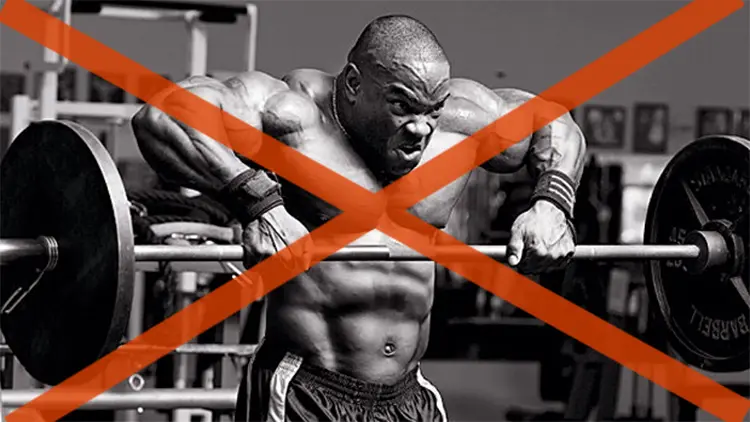
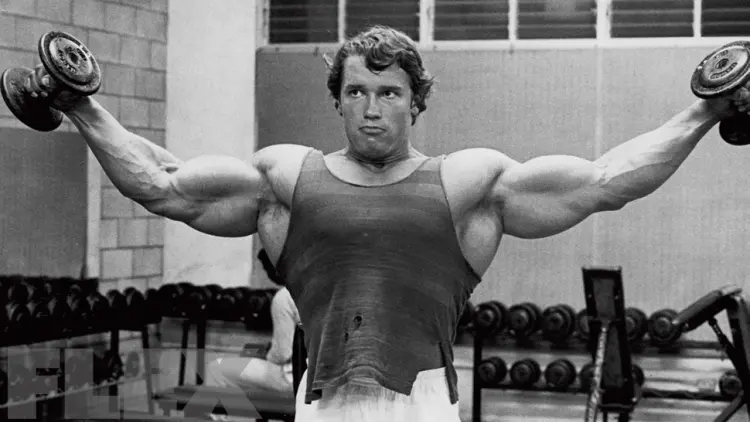

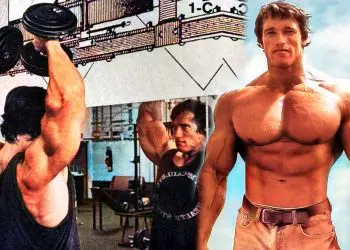
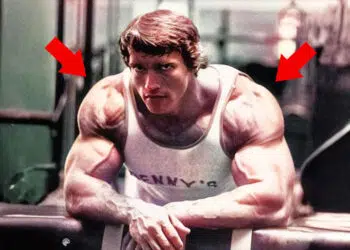
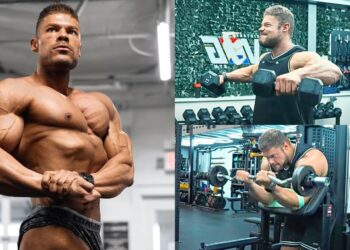

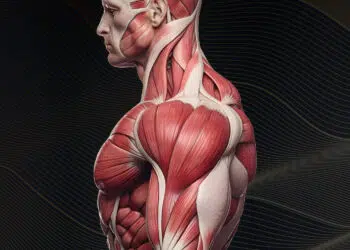
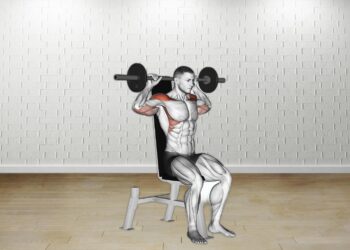

Great article! Need to try this